
Baton Rouge: The Heartbeat of Louisiana
Discover Baton Rouge, Louisiana: A captivating blend of history, culture, and Southern charm along the banks of the Mississippi River, offering unique experiences for every traveler.
Baton Rouge, the capital city of Louisiana, is a vibrant blend of history, culture, and Southern hospitality. Nestled along the banks of the Mississippi River, this city offers a unique mix of old-world charm and modern attractions. From its historic plantation homes to its bustling downtown, Baton Rouge is a place where the past and present coexist beautifully. Explore the city's rich history by visiting the Louisiana State Capitol, the tallest capitol building in the United States, and the Old State Capitol, a Gothic architectural marvel. For a deeper dive into the past, the LSU Rural Life Museum provides a glimpse into 19th-century life in Louisiana. Art enthusiasts will find solace in the Shaw Center for the Arts, home to galleries, theaters, and a rooftop terrace offering stunning views of the city. Baton Rouge is also a haven for food lovers, with a culinary scene that showcases the best of Southern cuisine. From savory gumbo and crawfish étouffée to sweet beignets, the city's restaurants offer a taste of Louisiana's rich culinary heritage. Don't miss the chance to visit the lively farmers markets and food festivals that celebrate local produce and traditions. Nature lovers can enjoy the city's many parks and outdoor spaces, such as the Bluebonnet Swamp Nature Center and the Baton Rouge Zoo. The riverfront area is perfect for a leisurely stroll, offering scenic views and opportunities for boating and fishing. With its warm climate and friendly locals, Baton Rouge is a welcoming destination that promises an unforgettable experience for every visitor.
Local tips in Baton Rouge
- Visit during spring or fall for the best weather and to avoid the summer heat and humidity.
- Wear comfortable shoes, as many of the attractions are best explored on foot.
- Try to catch a live music performance to experience the local culture and vibrant music scene.
- Check out local farmers markets for fresh produce and homemade treats.
- Don't forget to try local specialties like gumbo, crawfish, and beignets.
- Use the local bus system or rideshares to navigate the city easily.
- Visit the Louisiana State University campus for a beautiful walk and to see the famous Tiger Stadium.
Neighbourhoods in Baton Rouge
Baton Rouge: The Heartbeat of Louisiana
Baton Rouge, the capital city of Louisiana, is a vibrant blend of history, culture, and Southern hospitality. Nestled along the banks of the Mississippi River, this city offers a unique mix of old-world charm and modern attractions. From its historic plantation homes to its bustling downtown, Baton Rouge is a place where the past and present coexist beautifully. Explore the city's rich history by visiting the Louisiana State Capitol, the tallest capitol building in the United States, and the Old State Capitol, a Gothic architectural marvel. For a deeper dive into the past, the LSU Rural Life Museum provides a glimpse into 19th-century life in Louisiana. Art enthusiasts will find solace in the Shaw Center for the Arts, home to galleries, theaters, and a rooftop terrace offering stunning views of the city. Baton Rouge is also a haven for food lovers, with a culinary scene that showcases the best of Southern cuisine. From savory gumbo and crawfish étouffée to sweet beignets, the city's restaurants offer a taste of Louisiana's rich culinary heritage. Don't miss the chance to visit the lively farmers markets and food festivals that celebrate local produce and traditions. Nature lovers can enjoy the city's many parks and outdoor spaces, such as the Bluebonnet Swamp Nature Center and the Baton Rouge Zoo. The riverfront area is perfect for a leisurely stroll, offering scenic views and opportunities for boating and fishing. With its warm climate and friendly locals, Baton Rouge is a welcoming destination that promises an unforgettable experience for every visitor.
When is the best time to go to Baton Rouge?
Iconic landmarks you can’t miss
Tiger Stadium
Discover the exhilarating atmosphere of Tiger Stadium, home of LSU Tigers, where college football comes alive in Baton Rouge, Louisiana.
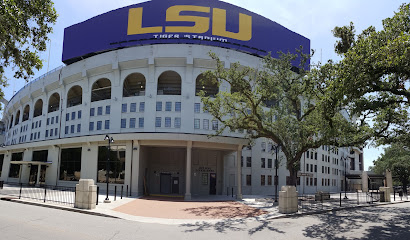
The Queen Baton Rouge
Discover the excitement of The Queen Baton Rouge, where gaming, dining, and entertainment come together in the heart of Louisiana.

BREC's Baton Rouge Zoo
Discover the diverse wildlife and engaging exhibits at BREC's Baton Rouge Zoo, a top tourist attraction in Louisiana for families and animal lovers.

USS KIDD Veterans Museum
Dive into history at the USS KIDD Veterans Museum, where naval heritage and the stories of brave veterans come to life in Baton Rouge.

Hilton Baton Rouge Capitol Center
Discover the rich culture and vibrant history of Baton Rouge from the luxurious comforts of Hilton Baton Rouge Capitol Center, your gateway to Louisiana's capital.

Blue Bayou Water Park
Experience the ultimate water adventure at Blue Bayou Water Park in Baton Rouge, Louisiana, featuring thrilling slides and family-friendly attractions.

Louisiana's Old State Capitol
Explore Louisiana's Old State Capitol, a stunning historical landmark and museum in Baton Rouge, rich with culture and captivating stories.

13th Gate Haunted House, Louisiana's Ultimate Haunted Attraction
Discover the spine-chilling thrills of the 13th Gate Haunted House in Baton Rouge, Louisiana, where immersive horror and unforgettable scares await.

13th Gate Escape, Louisiana's Ultimate Escape Games
Experience the thrill of adventure and puzzle-solving at 13th Gate Escape, Baton Rouge's ultimate escape room destination.

Knock Knock Children's Museum
Explore and play at Knock Knock Children's Museum, where imagination meets learning in a vibrant, interactive environment for children.

Riverfront Plaza & City Dock
Experience the charm of Baton Rouge at Riverfront Plaza & City Dock, a beautiful park with scenic views, cultural events, and outdoor fun along the Mississippi River.

Capitol Park Museum
Explore the vibrant history and culture of Louisiana at Capitol Park Museum, a premier destination in Baton Rouge showcasing art and heritage.

Louisiana Art & Science Museum
Explore the Louisiana Art & Science Museum in Baton Rouge, where art meets science along the picturesque banks of the Mississippi River.

Mississippi River Park
Discover the beauty and history of Mississippi River Park, Baton Rouge's serene escape with scenic views and cultural landmarks.

Louisiana State Capitol
Explore the Louisiana State Capitol, a historical landmark showcasing stunning architecture and captivating views of Baton Rouge, a must-see for every visitor.

Unmissable attractions to see
Houmas House Estate and Gardens
Explore the historical charm and lush gardens of Houmas House Estate, where Louisiana's rich culture and exquisite cuisine await.
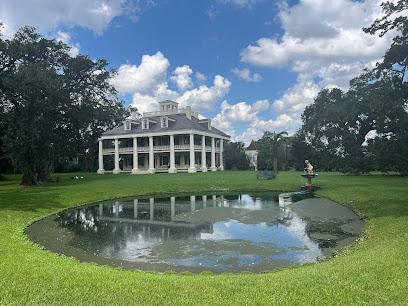
BREC's Baton Rouge Zoo
Explore BREC's Baton Rouge Zoo: A family-friendly destination with over 1,800 animals and engaging educational exhibits.

The Myrtles
Explore the haunting beauty of The Myrtles Plantation, a historic landmark in St. Francisville, Louisiana, where history and mystery intertwine.

Mike the Tiger's Habitat
Discover the charm of Baton Rouge at Mike the Tiger's Habitat, where wildlife and university spirit unite in a captivating experience.

Mike the Tiger's Habitat
Discover Mike the Tiger's Habitat at LSU, where you can see the beloved mascot in a naturalistic setting and learn about tiger conservation.

USS KIDD Veterans Museum
Explore the USS KIDD Veterans Museum in Baton Rouge, a historic naval landmark honoring the bravery and heritage of American sailors.

USS KIDD Veterans Museum
Discover the legacy of American valor at the USS KIDD Veterans Museum, a unique historical experience in Baton Rouge, Louisiana.

Blue Bayou Water Park
Discover the ultimate aquatic adventure at Blue Bayou Water Park in Baton Rouge, Louisiana—where fun and excitement await at every splash!

Independence Community Park
Explore Independence Community Park in Baton Rouge: a lush urban escape with gardens, trails, and family-friendly activities for all.
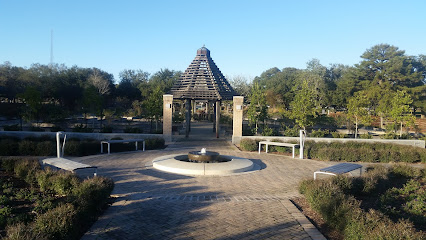
Louisiana's Old State Capitol
Discover the historical significance and architectural beauty of Louisiana's Old State Capitol in Baton Rouge, a captivating museum and landmark.

Louisiana's Old State Capitol
Explore the rich history and stunning architecture of Louisiana's Old State Capitol, a must-visit historical landmark in Baton Rouge.

13th Gate Escape, Louisiana's Ultimate Escape Games
Experience the thrill of immersive escape games at 13th Gate Escape in Baton Rouge, Louisiana, where adventure awaits around every corner.

Knock Knock Children's Museum
Discover creativity and play at Knock Knock Children's Museum, where children learn through imagination and interactive exhibits in Baton Rouge.

Liberty Lagoon
Experience the ultimate family fun at Liberty Lagoon, Baton Rouge's premier water park and recreational haven, perfect for all ages.

Riverfront Plaza & City Dock
Discover the scenic beauty and vibrant culture of Riverfront Plaza & City Dock, a premier destination in Baton Rouge for relaxation and recreation.

Essential places to dine
Parrain's Seafood Restaurant
Experience the best of Louisiana's seafood with Italian flair at Parrain's Seafood Restaurant in Baton Rouge.

The Chimes East
Discover the essence of Louisiana dining at The Chimes East, where seafood meets contemporary flavors in an inviting atmosphere.

The Chimes
Experience the heart of Louisiana's culinary scene at The Chimes, where Southern flavors meet vibrant atmosphere.

Elsie's Plate & Pie
Experience the heartwarming flavors of America at Elsie's Plate & Pie in Baton Rouge - where sweet meets savory in every delicious bite.

Roux 61 Seafood & Grill
Experience the best of Louisiana's seafood at Roux 61 Seafood & Grill in Baton Rouge – where fresh flavors meet Southern hospitality.

Willie's Restaurant
Experience authentic Louisiana cuisine at Willie's Restaurant in Baton Rouge - where fresh seafood meets contemporary flavors.
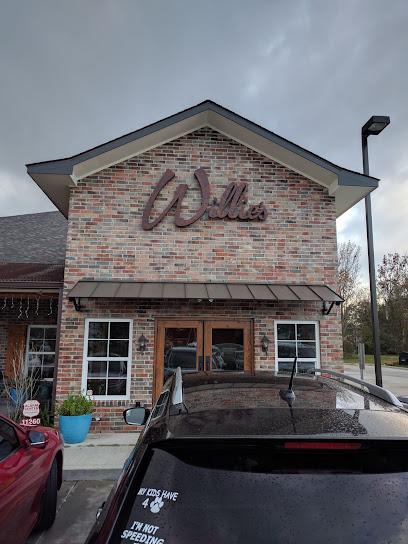
Frank's Restaurant-Baton Rouge
Experience the heart of American cuisine at Frank's Restaurant in Baton Rouge—your go-to spot for breakfast, brunch, and barbecue delights.

Texas de Brazil - Baton Rouge
Experience authentic Brazilian flavors at Texas de Brazil in Baton Rouge - a steak lover's paradise with unlimited servings of expertly grilled meats.

Mason's Grill
Discover the essence of American cuisine at Mason's Grill in Baton Rouge—where every meal is crafted with care and flavor.

BRQ Seafood and Barbeque
Discover BRQ Seafood and Barbeque in Baton Rouge - where exquisite seafood meets flavorful barbecue in a welcoming atmosphere.

J. Alexander's Restaurant
Experience culinary excellence at J. Alexander's Restaurant - where traditional American cuisine meets modern flair in Baton Rouge.

Ruth's Chris Steak House
Experience culinary excellence at Ruth's Chris Steak House in Baton Rouge - where premium steaks meet exceptional service in an elegant setting.

Sullivan's Steakhouse
Experience exquisite steaks and fine dining at Sullivan's Steakhouse in Baton Rouge - where culinary excellence meets vibrant ambiance.
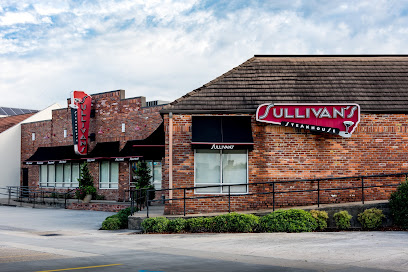
Drago's Seafood Restaurant - Baton Rouge
Experience the authentic flavors of Louisiana at Drago's Seafood Restaurant in Baton Rouge - where every meal is a celebration of Gulf Coast cuisine.

Mansurs on the Boulevard
Experience exquisite Southern cuisine at Mansurs on the Boulevard in Baton Rouge - a true culinary gem celebrating local flavors.

Markets, malls and hidden boutiques
Coyote Moon Crystals & Gifts
Explore the magical world of Coyote Moon Crystals & Gifts in Baton Rouge, where unique treasures await to be discovered.

The Pink Elephant Antiques
Explore The Pink Elephant Antiques in Baton Rouge for unique vintage clothing, antique furniture, and treasures that bring history to life.

Circa 1857
Explore Circa 1857 in Baton Rouge for an enchanting selection of antique furniture and home goods, blending history with modern elegance.

The Royal Standard
Explore The Royal Standard in Baton Rouge for unique gifts, stylish furniture, and local culture in a charming setting.
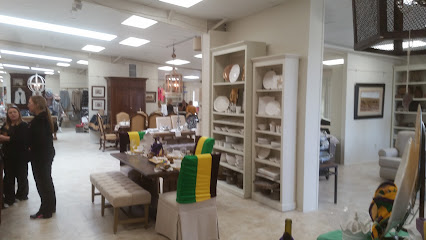
Time Warp Boutique
Explore Time Warp Boutique: Baton Rouge's hidden gem for vintage clothing and unique gifts, offering a delightful shopping experience in Louisiana.

Finders Keepers Antique Market And Art Gallery
Explore Baton Rouge's Finders Keepers Antique Market for a unique blend of antiques and local art in a charming atmosphere.

Sanctuary Home & Gifts
Explore the charm of Sanctuary Home & Gifts, where unique treasures and local craftsmanship await in Baton Rouge, Louisiana.

London's Fashion Boutique
Explore Baton Rouge's chicest fashion destination at London's Fashion Boutique, where style meets sophistication in a welcoming atmosphere.

Frock Candy
Explore Frock Candy in Baton Rouge for trendy women's clothing and unique fashion finds in a charming boutique setting.

Swap Boutique
Discover unique fashion treasures and sustainable shopping at Swap Boutique, Baton Rouge's premier consignment shop and vintage haven.

Altar'd State Perkins Rowe
Discover unique women's fashion at Altar'd State Perkins Rowe, where style meets purpose in Baton Rouge's vibrant shopping scene.

BRASS by Circa 1857
Explore locally crafted gifts, art, and gourmet treats at BRASS by Circa 1857, Baton Rouge’s charming gift shop and art gallery.

All That Jazz & More Boutique
Explore All That Jazz & More Boutique for a unique selection of women's fashion in vibrant Baton Rouge, Louisiana.

B-Unlimited : LSU
Explore B-Unlimited: LSU for trendy clothing that embodies the spirit of Louisiana State University in Baton Rouge, your go-to boutique for unique souvenirs.

End of The Lane
Explore Baton Rouge's End of The Lane gift shop for unique souvenirs and local treasures that capture the spirit of Louisiana.

Essential bars & hidden hideouts
The Smiling Dog
Experience the vibrant atmosphere and delicious cuisine at The Smiling Dog, Baton Rouge's favorite pub and grill for locals and tourists alike.

The Bulldog, Baton Rouge
Experience the vibrant atmosphere and delicious grilled dishes at The Bulldog in Baton Rouge, a local favorite for tourists and residents alike.

Olive or Twist
Experience the vibrant nightlife of Baton Rouge at Olive or Twist, where craft cocktails and a lively atmosphere await.

The Radio Bar
Experience the vibrant nightlife of Baton Rouge at The Radio Bar, where cocktails, music, and good times come together in perfect harmony.
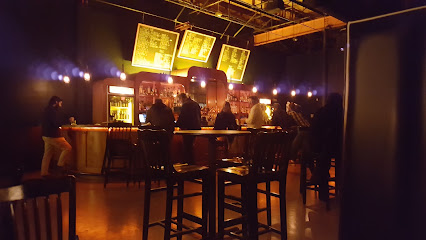
Hayride Scandal
Discover the lively cocktail scene at Hayride Scandal, a must-visit bar in Baton Rouge, Louisiana, offering creative drinks and a vibrant atmosphere.

Boudreaux & Thibodeaux's
Dive into the vibrant nightlife of Baton Rouge at Boudreaux & Thibodeaux's, a lively bar with live music and a taste of local culture.
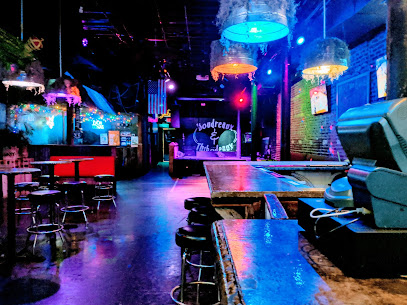
Phil Brady's Bar & Grill
Experience the best of Baton Rouge at Phil Brady's Bar & Grill, where delicious food meets a vibrant atmosphere and exceptional cocktails.
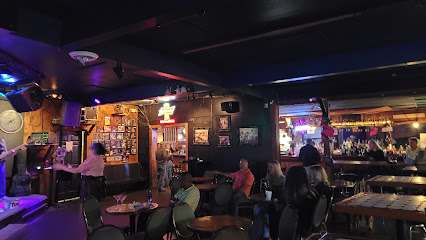
Bengal Tap Room
Experience the vibrant atmosphere of Bengal Tap Room, Baton Rouge's premier sports bar, with great drinks, delicious food, and live sports action.

Brickyard South Bar + Patio
Experience the heart of Baton Rouge nightlife at Brickyard South Bar + Patio, a vibrant locale for drinks, music, and socializing.

Duvic's
Experience the vibrant nightlife of Baton Rouge at Duvic's, a charming bar offering delightful drinks and a welcoming atmosphere.

The River Room
Discover the charm of Baton Rouge at The River Room, an upscale lounge offering breathtaking river views and exquisite cocktails.

Blend
Experience the charm of Blend, a premier wine bar in downtown Baton Rouge, offering an exquisite selection of wines and a cozy atmosphere.

The Lost Cove
Experience the vibrant atmosphere and innovative cocktails at The Lost Cove, Baton Rouge's premier cocktail bar for unforgettable nights out.

Bald Eagle Pub
Experience the vibrant nightlife at Bald Eagle Pub, Baton Rouge's favorite lounge for drinks, sports, and socializing in an inviting atmosphere.

13 Social
Discover the vibrant nightlife at 13 Social, Baton Rouge's premier cocktail bar offering expertly crafted drinks in a chic atmosphere.

Local Phrases
-
- HelloHowdy
[haʊ-di] - GoodbyeSee ya
[siː jə] - YesYeah
[jæ] - NoNah
[nɑː] - Please/You're welcomePlease/You're welcome
[pliːz/jʊər ˈwɛl·kəm] - Thank youThank ya
[θæŋk jə] - Excuse me/SorryPardon me
[ˈpɑː·dən mi] - How are you?How y'all doin'?
[haʊ jɔːl ˈdu·ɪn] - Fine. And you?Fine. And y'all?
[faɪn. ænd jɔːl] - Do you speak English?Ya speak English?
[jə spiːk ˈɪŋ·ɡlɪʃ] - I don't understandI don't get ya
[aɪ doʊnt ɡɛt jə]
- HelloHowdy
-
- I'd like to see the menu, pleaseI wanna check the menu, please
[aɪ ˈwɑn·ə ʧɛk ðə ˈmɛn·juː pliːz] - I don't eat meatI don't eat no meat
[aɪ doʊnt it noʊ mit] - Cheers!Cheers!
[ʧɪrz] - I would like to pay, pleaseI wanna settle up, please
[aɪ ˈwɑn·ə ˈsɛt·əl ʌp pliːz]
- I'd like to see the menu, pleaseI wanna check the menu, please
-
- Help!Help!
[hɛlp] - Go away!Get outta here!
[ɡɛt aʊtə hɪr] - Call the Police!Ring the Po Po!
[rɪŋ ðə poʊ poʊ] - Call a doctor!Call a doc!
[kɔl ə dɑk] - I'm lostI'm turned around
[aɪm tɜrnd əˈraʊnd] - I'm illI'm feelin' sick
[aɪm ˈfilɪn sɪk]
- Help!Help!
-
- I'd like to buy...I wanna buy...
[aɪ ˈwɑn·ə baɪ] - I'm just lookingI'm just browsin'
[aɪm ʤəst ˈbraʊz·ɪn] - How much is it?How much?
[haʊ mʌʧ] - That's too expensiveThat's too pricey
[ðæts tuː ˈpraɪ·si] - Can you lower the price?Can ya come down on the price?
[kæn jə kʌm daʊn ɑn ðə praɪs]
- I'd like to buy...I wanna buy...
-
- What time is it?What's the time?
[wɑts ðə taɪm] - It's one o'clockIt's one
[ɪts wʌn] - Half past (10)Half past (10)
[hæf pæst (tɛn)] - MorningMornin'
[ˈmɔrnɪn] - AfternoonAfternoon
[ˌæftɜrˈnun] - EveningEvenin'
[ˈivənɪn] - YesterdayYestuhday
[ˈjɛstədeɪ] - TodayToday
[təˈdeɪ] - TomorrowTomorra
[təˈmɑrə] - 1One
[wʌn] - 2Two
[tuː] - 3Three
[θriː] - 4Four
[fɔr] - 5Five
[faɪv] - 6Six
[sɪks] - 7Seven
[ˈsɛvən] - 8Eight
[eɪt] - 9Nine
[naɪn] - 10Ten
[tɛn]
- What time is it?What's the time?
-
- Where's a/the...?Where's the...?
[wɛrz ðə] - What's the address?What's the addy?
[wɑts ðə ˈædi] - Can you show me (on the map)?Can ya show me (on the map)?
[kæn jə ʃoʊ mi (ɔn ðə mæp)] - When's the next (bus)?When's the next (bus)?
[wɛnz ðə nɛkst (bʌs)] - A ticket (to ....)A ticket (to ....)
[eɪ ˈtɪk·ɪt (tu ...)]
- Where's a/the...?Where's the...?
History of Baton Rouge
-
Before European colonization, the Baton Rouge area was inhabited by native tribes, including the Houma, Bayagoula, and Chitimacha. These early settlers established thriving communities along the Mississippi River, living off the land and engaging in trade and cultural exchange.
-
Baton Rouge was officially founded in 1699 by French explorer Pierre Le Moyne d'Iberville. The name 'Baton Rouge' translates to 'Red Stick' in French, inspired by a red cypress pole that marked the boundary between two tribal hunting grounds. This area quickly became a strategic point for the French, Spanish, and later the British.
-
In 1763, following the Treaty of Paris, Baton Rouge came under Spanish control. The Spanish period saw the establishment of a military post and the construction of Fort San Carlos. These developments laid the groundwork for the city's future growth and architectural heritage.
-
In 1803, the Louisiana Purchase transferred control of Baton Rouge from France to the United States. This monumental event marked the beginning of significant American influence in the region, fostering economic growth and attracting settlers from various backgrounds.
-
During the Civil War, Baton Rouge was a strategic location due to its position on the Mississippi River. The city changed hands multiple times between Union and Confederate forces. Post-war, Baton Rouge underwent Reconstruction, which brought about significant social and economic changes.
-
In 1846, Baton Rouge was designated as the capital of Louisiana, replacing New Orleans. The Old State Capitol, completed in 1852, is a Gothic Revival architectural masterpiece that symbolizes this pivotal moment in the city’s history.
-
The 20th century saw Baton Rouge transform into an industrial hub, particularly with the growth of the petrochemical industry. Companies like ExxonMobil established major refineries, contributing to economic prosperity and population growth.
-
Baton Rouge played a significant role in the Civil Rights Movement. In 1953, the city was the site of the first successful bus boycott, which served as a model for the later Montgomery Bus Boycott. This period highlighted Baton Rouge’s contribution to the fight for racial equality.
-
Today, Baton Rouge is celebrated for its rich cultural tapestry, blending French, Spanish, African, and Native American influences. The city hosts numerous festivals, such as the Baton Rouge Blues Festival and the Louisiana Cajun-Zydeco Festival, showcasing its diverse heritage.
Baton Rouge Essentials
-
Baton Rouge is serviced by Baton Rouge Metropolitan Airport (BTR), which has direct flights from major U.S. cities like Dallas, Atlanta, and Houston. Alternatively, you can fly into Louis Armstrong New Orleans International Airport (MSY) and drive about 90 minutes west to reach Baton Rouge. For those preferring rail travel, Amtrak offers services to Baton Rouge via the City of New Orleans route. Interstate highways I-10 and I-12 also make it easily accessible by car.
-
Public transportation in Baton Rouge is managed by the Capital Area Transit System (CATS), providing bus services across the city. However, the most convenient way to explore Baton Rouge is by renting a car, as many attractions are spread out. Ride-sharing services like Uber and Lyft are also readily available. Biking is another option, with bike rentals and dedicated bike lanes in some areas.
-
The official currency is the U.S. Dollar (USD). Credit and debit cards are widely accepted in most places, including restaurants, shops, and hotels. ATMs are plentiful, particularly in downtown and shopping areas. It's advisable to carry some cash for smaller establishments and tips.
-
Baton Rouge is generally safe for tourists, but like any city, it has areas that are best avoided, especially after dark. Neighborhoods such as North Baton Rouge and parts of Gardere have higher crime rates. Always be vigilant and aware of your surroundings, especially in crowded areas. Keep your valuables secure and avoid flashing expensive items.
-
In case of emergency, dial 911 for immediate assistance. Baton Rouge has several hospitals, including Our Lady of the Lake Regional Medical Center and Baton Rouge General Medical Center. Pharmacies are available throughout the city for minor health issues. Make sure to have travel insurance that covers medical emergencies.
-
Fashion: Do dress comfortably and casually, especially in the hot and humid summer months. Don't wear overly revealing clothing if visiting religious sites. Religion: Do respect local customs and traditions. Don't interrupt or be disruptive during religious ceremonies. Public Transport: Do be polite and patient when using public transport. Don't eat or drink on buses. Greetings: Do greet people with a smile and a friendly 'Hello.' Handshakes are common. Eating & Drinking: Do try the local cuisine, including dishes like gumbo and jambalaya. Don't refuse food if offered by locals, as it is considered impolite.
-
To experience Baton Rouge like a local, visit the Red Stick Farmers Market for fresh produce and local goods. Explore the city's live music scene, particularly blues and jazz. Take a stroll along the Mississippi River at the levee or visit the LSU Rural Life Museum to understand the region's history. Don't miss out on a game day at LSU's Tiger Stadium if you're visiting during football season.
Trending Landmark in Baton Rouge
-
Tiger Stadium
-
The Queen Baton Rouge
-
BREC's Baton Rouge Zoo
-
USS KIDD Veterans Museum
-
Hilton Baton Rouge Capitol Center
-
Blue Bayou Water Park
-
Louisiana's Old State Capitol
-
13th Gate Haunted House, Louisiana's Ultimate Haunted Attraction
-
13th Gate Escape, Louisiana's Ultimate Escape Games
-
Knock Knock Children's Museum
-
Riverfront Plaza & City Dock
-
Capitol Park Museum
-
Louisiana Art & Science Museum
-
Mississippi River Park
-
Louisiana State Capitol
Nearby Cities to Baton Rouge
-
Things To Do in Lafayette
-
Things To Do in Houma
-
Things To Do in McComb
-
Things To Do in New Orleans
-
Things To Do in Natchez
-
Things To Do in Slidell
-
Things To Do in Lake Charles
-
Things To Do in Gulfport
-
Things To Do in Hattiesburg
-
Things To Do in Vicksburg
-
Things To Do in Biloxi
-
Things To Do in Monroe
-
Things To Do in Port Arthur
-
Things To Do in Petaluma
-
Things To Do in Beaumont

















